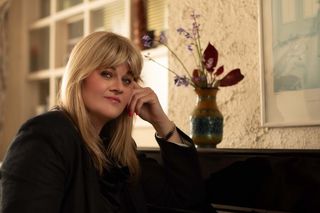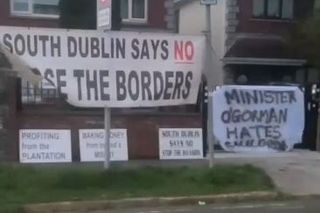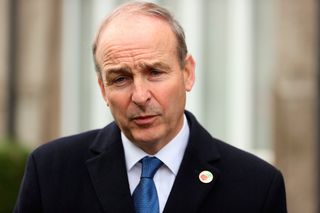The New Gaeilgeoirs: Forecasts of the Irish language’s demise are greatly exaggerated
Listening to the debate on our native tongue you’d think it’s like Schrödinger’s cat: both dead and alive. But forecasts of its demise are greatly exaggerated – if not entirely wrong
The Irish language is booming. It’s also dying. So what exactly is going on? In the 2016 Census more than 1.7 million people claimed to speak Irish. There are more than 400 gaelscoils and all-Irish colleges on the island and that number is growing year on year.
Irish is the most popular language for learners in Ireland on the online language app Duolingo, the 16th most popular language worldwide and the fastest growing.
Just last week, it was announced that Baile Átha Cliath le Gaeilge, a joint initiative between Conradh na Gaeilge and Dublin City Council, will receive €415k in state funding to increase visibility, and encourage the use of the Irish language across the Irish capital.
Yet an academic study in 2007 forecast that Irish would be dead as a community language in the Gaeltacht by 2027.
Damned lies and statistics. They don’t seem to matter much to a new generation of Irish speakers such as Dublin-born actor and poet, Roxanna Nic Liam. “It’s pointless to put numbers on it,” she says. “It’s as pointless as asking how much money art makes. It’s just culturally very important. It’s very important for our soul.”
“Soul” is a word which comes up a lot when you’re asking today’s speakers why Irish matters.
Actor Dónall Ó Héalai – Screen International’s “Star of Tomorrow 2020” – calls Irish “my soul’s language” in an online TED talk on his native language that has been viewed more than 300,000 times.
Ó Héalai stars in two of the recent internationally recognised films in the Irish language: Arracht, produced by Cúán Mac Conghail, which is set in Connemara during the Famine, and Foscadh, directed by Seán Breathnach, a contemporary story about a repressed young Connemara man, that’s currently on the international festival circuit and showing in cinemas here later this year.
Ó Héalai is from the Connemara Gaeltacht, as is Foscadh's director Breathnach, and it’s not surprising they feel that Irish comes from somewhere deeper in them than English. “I tell my children that my parents spoke this language, and so did their parents and so did their parents and so did their parents... It can’t stop with us,” Breathnach says.
What’s more surprising is how many speakers of Irish as a second language feel it’s really their first.
Read more
The former Wexford hurler Diarmuid Lyng describes his sudden awakening to the Irish language as a feeling it was in his DNA. He was completely ignorant of the language until a few days into his Gaeltacht course as a primary school teacher when he had a dream in Irish and, as he says, “a fire was lit in me which I don’t think will ever go out”.
He later went about as native as it’s possible to go, moving to the Dingle Gaeltacht where he is now raising his children with his partner, Siobhán de Paor.
For his family the language is clearly just part of a much bigger journey towards a closer relationship with nature. This is the wider theme of their Wild Irish Retreats, short immersions in the nature of the Dingle Gaeltacht combined with activities such as yoga, meditation, hurling, a sweat lodge and bonfires with the language thrown in (wildirishretreat.ie).
While Irish is not an essential part of the experience for some of the participants, it is for others: “They’re looking for a new language to express their new connection to nature in the face of an ecological crisis,” Lyng says.
Today’s Irish language enthusiasts mention the special relationship Irish has with the landscape it evolved to describe over 3,000 years.
This relationship is the inspiration behind Manchán Magan’s book, Thirty-Two Words for Field, and its successor Tree Dogs, Banshee Fingers and Other Irish Words for Nature. He writes that in Irish a ladybird is a “bóín Dé”, or “God’s little cow”. A pine marten is a “cat crainn” or a “tree cat”. A goldfinch is a “lasair choille” or a “flame of the woods”.
In some ways Magan’s lists of words are recognition that they’re fast disappearing. But the words in themselves are also presented as portals not just to our history, but to alternative ways of being.
“My agenda is I want people to connect to their spirit”, Magan says.
Why is this upsurge happening right now?
For Magan, the Irish are “victims of post-colonial trauma” dating from the days of the Famine, which led us to associate the language with poverty.
What we’re seeing now, he believes, is the working out of a massive shift in the country’s economic welfare and self-esteem since the 1990s which were, he says, “Year Zero for the Irish language.”
We were suddenly wealthy enough to find that emigration wasn’t inevitable, he points out. TG4 was founded in 1996 and kids saw Scooby-Doo and SpongeBob SquarePants as Gaeilge.
Cúán Mac Conghail, producer of Arracht, echoes Magan’s belief that as a people we were traumatised by the Famine and believed that Irish was the language of death. Though you could use that to make the language a political weapon, Mac Conghail says it’s been “decoupled” from politics in a process which started in the 1960s with the folk revival.
That’s far from the case in the North where a proposed Irish Language Act to protect the Irish language has on occasion threatened to rip apart the uneasy peace. The controversial rapping trio Kneecap, formed on the hoof after a friend was jailed for graffiti supporting the Act, use Irish as a ghetto language to get the point across.
Though unambiguously republican, they’re also very funny and this freedom is another legacy of the 1990s: namely the Good Friday Agreement of 1998. Their song ‘Get Your Brits Out’ imagines noted DUP politicians taking drugs and smoking the night away. Kneecap lampoon their own community too, in songs like ‘Gael-Gigolo’, which sees them selling their wares to respectable ancient ladies in republican heartlands (so no one misses out they offer a “cross-community service”).
Their sell-out gigs in Ireland and the UK last year made a huge impression on young Irish speakers – “1,000 people screaming in Irish in the Olympia Theatre”, Roxanna Nic Liam says, adding that people continued to speak Irish in the Dublin venue’s bars and the toilets.
But was the Olympia audience, like Kneecap, speaking an urban patois heavily influenced by the English language?
Tate Donnelly, a Gaeilgeoir from Co Monaghan who was, at 21, the youngest candidate in the 2020 general election, running for the Green Party, admits these younger speakers are not using the language of the Gaeltacht, but argues that we need “a new colloquialism”. “If you insist you have to speak it perfectly or not at all, it will be not at all.”
Magan may write that the “new colloquialism” is “a ghost form of Irish” but it’s what this generation of Irish speakers is embracing, with the number of “learner” Irish speakers now outnumbering speakers in the Gaeltacht.
Central to this cultural explosion have been the pop-up Gaeltachts which, for five years until the lockdowns, saw Irish-speaking pub events happening monthly all over Ireland as well as in many European cities and far-flung locations including Bolivia and Vietnam.
Co-founder Peter Kavanagh, who as an independent councillor is mayor of South Dublin, says he expected 30 people to turn up to the first pop-up in Dublin and was stunned to get more than 200.
Covid may have temporarily halted the pop-up Gaeltachts but the lockdowns have also caused people to connect to their “spirit” through nature, Magan says. “People have been swimming in Lough Lene where I live in Co Westmeath right through the winter. No one has swum in Lough Lene in winter for 9,000 years.”
He thinks an awareness that “the world might be dying” is causing people to go back, not just to the endangered Irish landscape but also to the endangered Irish language that describes it.
Roxanna Nic Liam’s short film Siúcra, commissioned by the Axis Centre in Ballymun, north Dublin, is really a poetic love letter to the language, challenging us to speak Irish with the words: “A language without a voice?” she asks in the film, “Well, that’s our choice.”
For Nic Liam, Irish is “nearly an art form, not a language”, a cultural asset to be cherished, not forced down anyone’s throat.
A century after the foundation of the State, the Irish language is alive in ways which are both beyond the wildest dreams and the worst nightmares of its founders.
“Nobody is trying to deny Irish is a minority language,” Peter Kavanagh says, “but to deny it’s important to national identity is also untrue.”
Just do it: Where and how to learn Irish this year
Oideas Gael runs Irish courses for adults in beautiful Glencolumbkille, Co Donegal. Beginning this year with a course on St Patrick’s weekend, these continue through Easter and right through the summer, with a constantly expanding range of cultural courses such as language and landscape (June 18-25 and August 20-27), which includes a study of the heritage of the local area (folklore, music, the local dialect, St Colomba and more) and a high-level Saibhreas na Gaeilge language course on Tory Island (June 25 to July 1). oideas-gael.com
Gaelchultúr Coláiste na hEireann, based in Dublin, runs a huge range of language courses which are currently mostly online. As well as general courses they run specialist courses for the public sector and for students at second and third level. gaelchultur.com
Scoil Scairte, a hedge school through Irish offered by The Trailblazery in collaboration with Manchán Magan is a nine-week online course running from February 3 at 7pm. It claims to be “a journey into the heart and soul of the Irish language”. Among the mentors will be musicians Liam Ó Maonlaí and Iarla Ó Lionáird as well as psychotherapist and actor Seán Ó Tarpaigh and the Nigerian educator Bayo Akomolafe. thetrailblazery.com/scoilscairte
**This article was amended on 24/01/2022 to reflect that Cúán Mac Conghail is the producer of Arracht, the film is directed by Tom Sullivan.
Join the Irish Independent WhatsApp channel
Stay up to date with all the latest news














